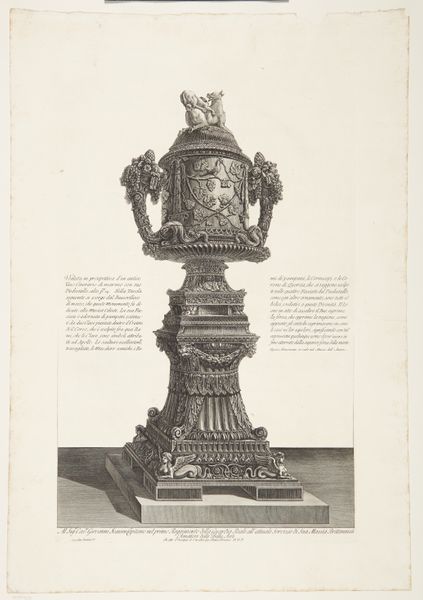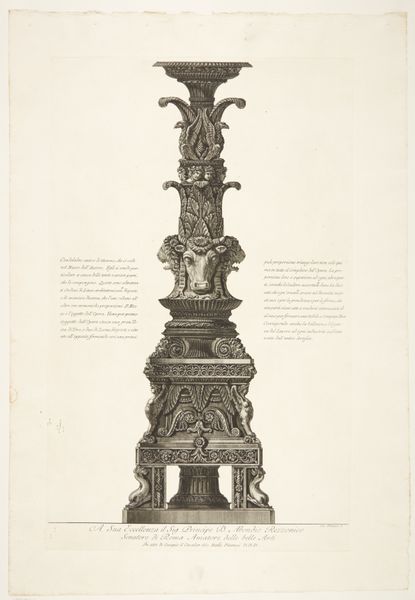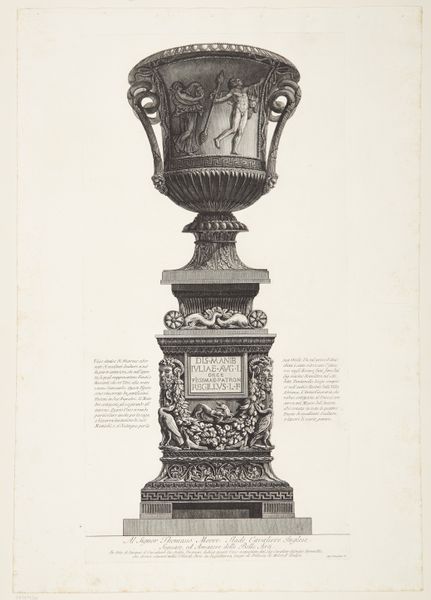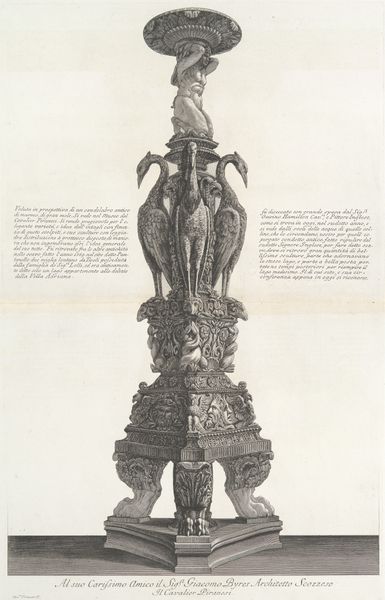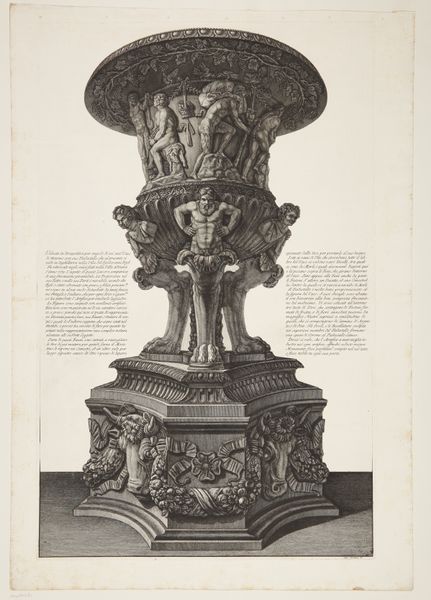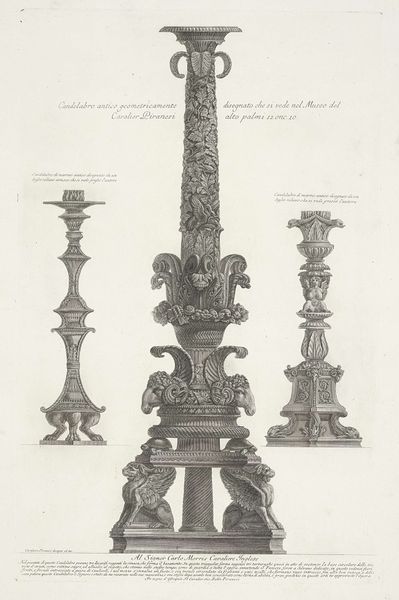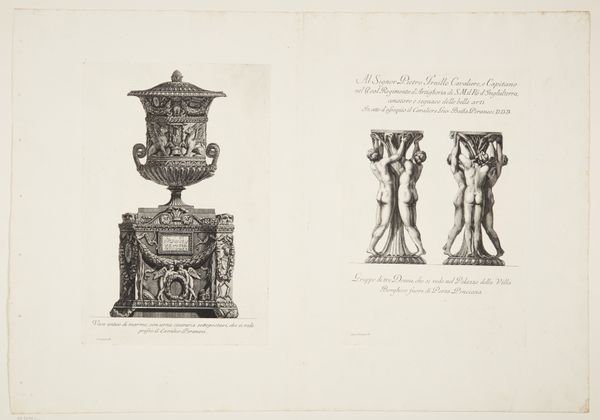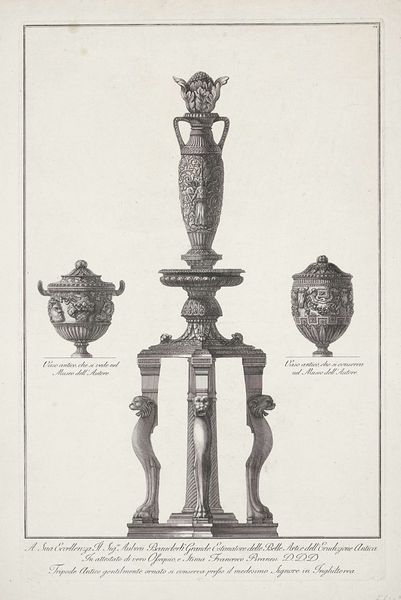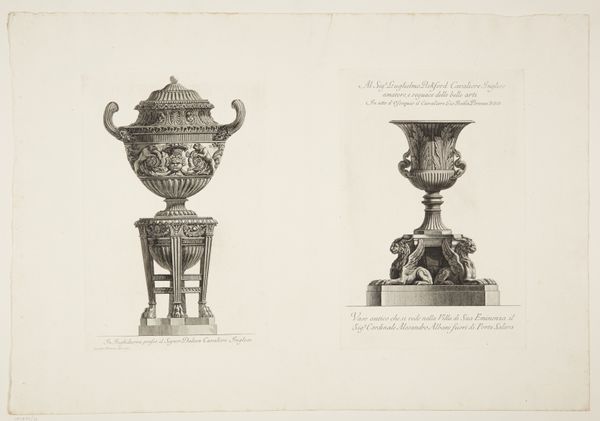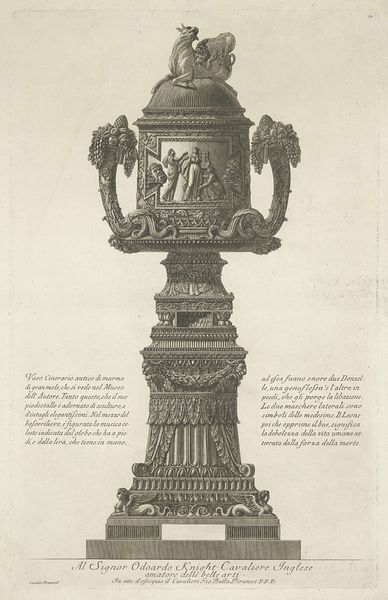
Marble candelabrum found at Hadrian's Villa 1769 - 1778
0:00
0:00
print, metal, engraving, architecture
#
neoclacissism
# print
#
metal
#
pencil drawing
#
graphite
#
engraving
#
architecture
Dimensions: 670 mm (height) x 420 mm (width) (plademaal)
Editor: Here we have Giovanni Battista Piranesi’s engraving, "Marble candelabrum found at Hadrian's Villa," created between 1769 and 1778. It's striking – so elaborate! Almost comically overloaded with detail. What am I missing? Curator: Missing? Nothing at all, perhaps everything! It's delicious excess, isn't it? Piranesi wasn’t just documenting; he was amplifying. The candelabrum itself, unearthed at Hadrian’s Villa, was already steeped in Roman imperial grandeur. Editor: So, he's exaggerating the Roman extravagance? Curator: Exactly! Look how he layers on the motifs – sphinxes, garlands, grotesque masks. It’s Neoclassical, sure, but with a twist, a flamboyant Piranesian flourish. Think of it as archeological fact colliding head-on with artistic fancy. This object didn't just stand in a room; it declared a statement. How do you imagine it in its time? Editor: I imagine a dark, echoing hall, flickering candlelight playing off the marble... Very dramatic. So, the print isn't just about showing us something, it's about a feeling. Curator: Precisely! It's about conjuring the *aura* of Roman power and the romance of rediscovery, seasoned with a dash of theatrical flair, or rather, a truckload of flair. Piranesi invites us to marvel, yes, but also to question. How much is "real," and how much is his inspired reimagining? Editor: That makes you wonder how we see the past! It's not so clear or straightforward. Curator: The past is another country and engravers, well, they're tour guides, adding a touch of myth as needed. Now *that's* something to take away. Editor: Definitely changes how I'll see things now.
Comments
No comments
Be the first to comment and join the conversation on the ultimate creative platform.
